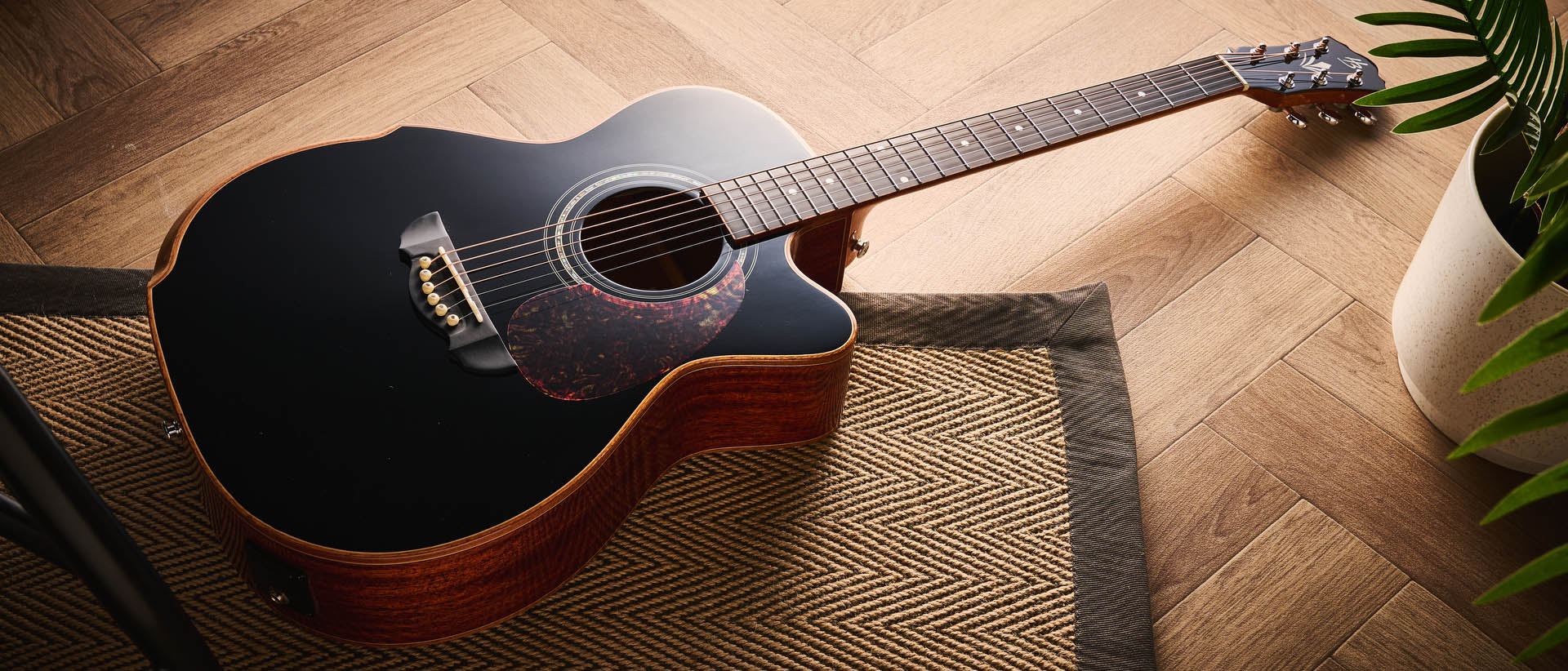Further Exploration of Playing Slide in Open G Tuning
Investigating Muddy Waters and Johnny Winter-style bottleneck licks.
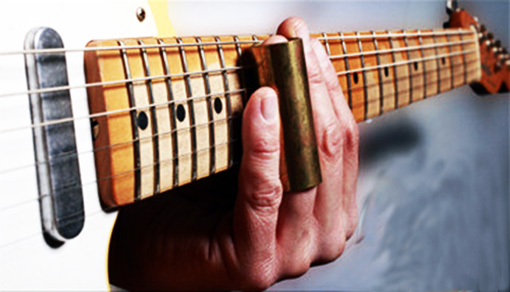
Last time, I presented some techniques, chord forms and licks that are commonly used for playing slide in open G tuning, which is sometimes referred to as “Spanish tuning” or “happy tuning.”
This month, I’d like to offer a further investigation into the musical possibilities that open G tuning offers for slide playing.
All of the licks and riffs will work great whether you are playing them on a resonator, acoustic or electric guitar, and whether you prefer a glass, metal or ceramic slide.
FIGURE 1 illustrates the most commonly used open G tuning, spelled, low to high, D G D G B D. To tune to open G from standard tuning (E A D G B E), tune your sixth, fifth and first strings down one whole step and leave your fourth, third and second strings where they are. With the guitar tuned this way, strumming across all six open strings will sound an open G major chord, with the fifth, D, being the lowest note.
When it comes to the pick hand, most slide guitarists prefer to play with either their bare fingertips, with a thumbpick and fingers, or with a thumbpick and fingerpicks. (The remaining options are to play with a flat pick and bare fingers—what’s known as hybrid picking—or with a flatpick exclusively.) I myself prefer to play slide with my bare fingers, although I will occasionally employ hybrid picking.
One of the greatest blues singers, guitarists and composers of all time is Sleepy John Estes, who made his recording debut in 1929 and around that time recorded “The Girl I Love She Got Long Curly Hair.” Ry Cooder brilliantly covered the song under the title “Brownsville” on his eponymous 1970 debut album. In the lyrics, Estes describes returning to rural Brownsville, Tennessee, which remained his hometown until his death in 1977. Estes often recorded with mandolin great Yank Rachell, and on “Brownsville” Cooder approximated Estes’ guitar lick on mandolin, rearranging it with a different melodic pattern. FIGURE 2 represents a twist on Cooder’s version by adapting a similar lick for slide guitar.
When I begin the lick (bar 1), the upbeat of beat one includes a slide up to B, the major third of G, followed by the open fourth string and then the open third string. On the upbeat of beat two, I slide up to D, the fifth, and follow with a signature descending pattern. This initial idea is recalled in bar 5, but here I rhythmically displace the phrasing by placing the lick that originally fell on the upbeat of “one” in bar 1 over to the upbeat of beat three. This may sound a bit confusing, but the reconfiguring of how and where a signature lick falls within a bar of 4/4 is a staple of “old-style” country, Delta, Chicago and Texas blues, as heard in Howlin’ Wolf’s “Smokestack Lightning” among many other blues classics.
All the latest guitar news, interviews, lessons, reviews, deals and more, direct to your inbox!
Bars 3 and 4 feature a straight rhythm part, played without the slide, that alternates between G5 and G7 chord shapes, à la Robert Johnson’s “Cross Road Blues.” The four chord, C, is sounded in bar 8 by sliding up to the fifth fret and laying the slide across the middle four strings. After a return to the main lick in bar 10, the five chord, D, is alluded to in bar 12 with a simple single-note melodic line performed mostly on the fourth string.
Another old blues classic originally performed in essentially this same tuning scheme is Muddy Waters’ “Rollin’ and Tumblin’.”
Muddy recorded the song in open A tuning, which is identical to open G but with each string tuned one whole step higher (low to high, E A E A C# E). FIGURE 3 offers an example played in this style, transposed down to open G tuning for the sake of convenience, beginning with a single-note melody played entirely on the first string. Muddy usually played with a thumbpick, so I prefer to use flatpicking for this example, relying on the pick to accentuate the melodic patterns throughout.
Bars 3–6 represent the tune’s signature rhythm pattern, which is built from three bars of 4/4 followed by a single bar of 2/4, and then a return to 4/4 at the change to the four chord, C, in bar 7. The additional bar of 2/4 is utilized throughout the song whenever transitioning from the one chord, G, to either the four chord, C, or the five chord, D. In this example, the C chord is sounded by laying the slide across multiple strings at the fifth fret, and the D chord is likewise formed at the seventh fret.
Our final example, FIGURE 4, is inspired by a track Johnny Winter recorded for his 1980 release, Raisin’ Cane, called “Sitting in the Jailhouse,” which he played on electric guitar in open G tuning. This is another great example of leaning on the flatpick to execute specific slide phrases. This example begins with a lick performed by dragging the pick across the top three strings while resting the slide directly above the 12th fret, sounding a sweep-picked G major triad (G B D), followed by a pair of alternating descending phrases. I employ both palm and fret-hand muting in order to make the individual notes of the phrase stand out from one another. Strive for clarity in articulation when executing these phrases.
The four chord, C7, is played using a standard root-fifth/root-sixth alternating pattern fretted on the fifth and fourth strings. This technique is also used for the five chord, D7, in bar 13 of the progression. For the turnaround in bar 15, played without the slide, a somewhat wide fret-hand stretch is required to reach the high G root note on the first string’s fifth fret while playing the chromatically descending line on the fourth string. When performing this turnaround, be sure to keep your fret hand relaxed and lift the slide to keep it out of the way.
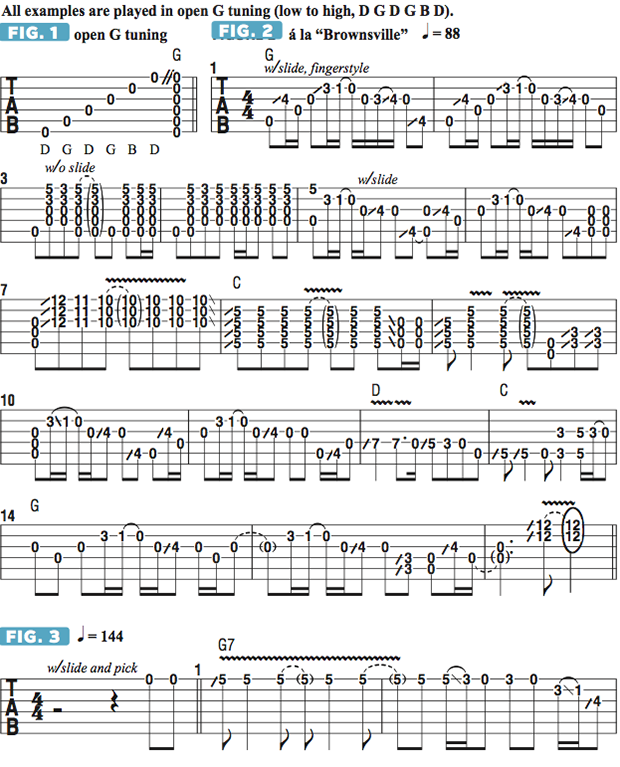
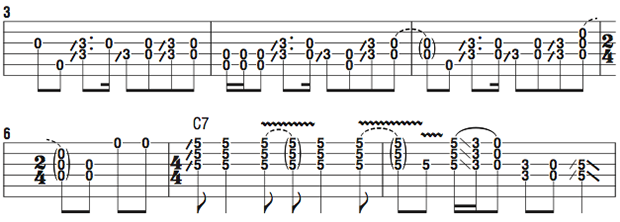
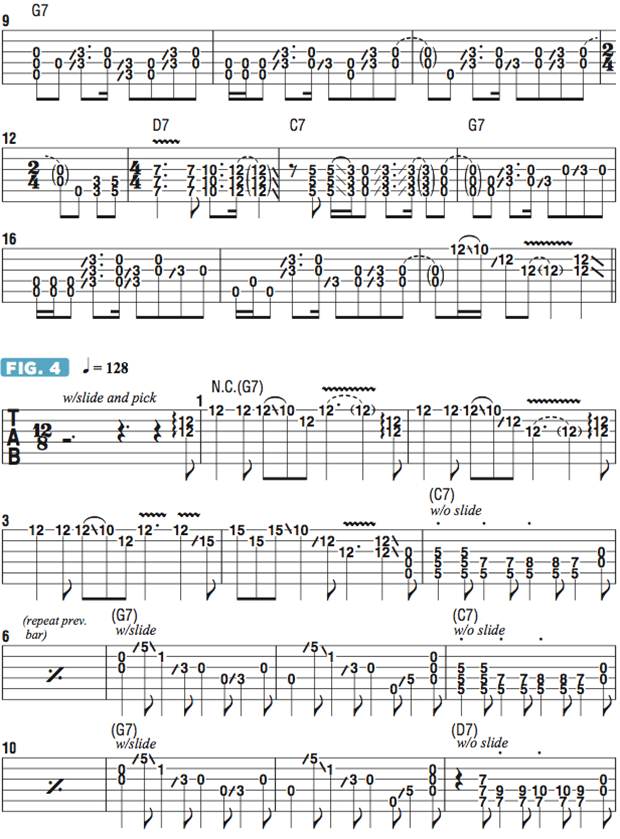

Guitar World Associate Editor Andy Aledort is recognized worldwide for his vast contributions to guitar instruction, via his many best-selling instructional DVDs, transcription books and online lessons. Andy is a regular contributor to Guitar World and Truefire, and has toured with Dickey Betts of the Allman Brothers, as well as participating in several Jimi Hendrix Tribute Tours.

